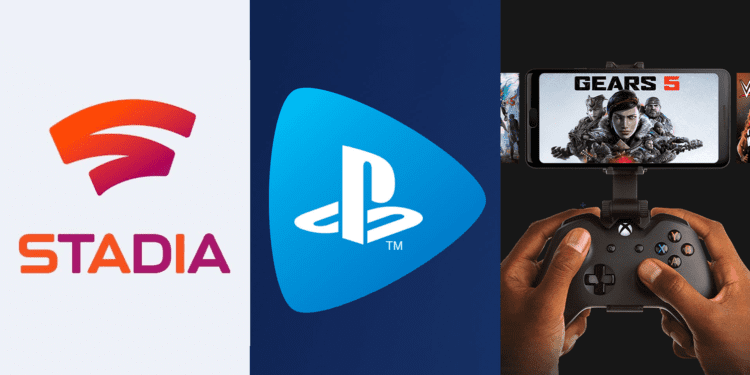The gaming industry is on the verge of a monumental shift, with cloud gaming emerging as a potential game-changer. As services like Google Stadia and Xbox Cloud Gaming gain traction, players are increasingly able to stream their favorite games directly to various devices—smartphones, laptops, and even smart TVs—without the need for high-end hardware. This new model is set to disrupt the traditional gaming landscape, offering unmatched convenience and flexibility. But does this mark the end of traditional consoles as we know them? Let’s dive into the rise of cloud gaming and explore the potential consequences for the gaming world.
At its core, cloud gaming allows players to stream games from remote servers rather than running them locally on a console or PC. The game is processed in the cloud, and the player’s device acts merely as a medium to receive the video and input commands. This eliminates the need for expensive gaming hardware, like PlayStation or Xbox consoles, or powerful gaming PCs. Instead, players can simply connect to a service and enjoy top-tier gaming experiences, regardless of their device’s specs.
Convenience is a major driving force behind the rise of cloud gaming. With the ability to play anywhere, anytime, and on almost any device, gamers no longer need to be tethered to a single location or specific piece of hardware. This means you could start a game on your phone while commuting, pick it up on your laptop when you get home, and continue on your smart TV later. The accessibility and flexibility offered by cloud gaming are unparalleled, making it an attractive option for both casual gamers and enthusiasts alike.

Cloud gaming services like Google Stadia, Xbox Cloud Gaming, and Nvidia GeForce Now offer a wide range of games that can be streamed instantly, without the need to install or download large files. The focus is on delivering seamless, high-quality gameplay through the cloud, where updates, patches, and even DLCs are handled automatically. This removes the barriers traditionally associated with gaming consoles—such as limited storage, long downloads, and the need for physical game discs.
Despite these conveniences, cloud gaming is not without its challenges. One of the primary concerns is latency, or the delay between a player’s input and the corresponding action in the game. While cloud gaming technology has improved significantly, players can still experience lag if their internet connection is unstable or slow. This is particularly problematic for fast-paced, competitive games where even a slight delay can be detrimental. For cloud gaming to reach its full potential, service providers must continue to refine their systems and ensure a stable, low-latency experience for players worldwide.
Another significant challenge is data consumption. Streaming games in high definition, particularly AAA titles, requires a large amount of data. For players on limited data plans or in areas with slow internet speeds, this can be a major obstacle. Many cloud gaming services recommend a stable, high-speed internet connection, which may not be accessible to everyone. Additionally, large data usage can be expensive, especially for those who play regularly. Until these issues are addressed, cloud gaming may remain a niche offering for certain audiences.
Despite these hurdles, the shift toward cloud gaming is already evident, signaling a significant transformation in the gaming industry. As technology improves and internet speeds continue to rise globally, more players are likely to embrace cloud gaming as the primary method of playing. For developers, cloud gaming provides new opportunities for distributing games and monetizing content, while also reducing the physical and logistical challenges associated with traditional gaming hardware.
The future of traditional consoles is a topic of much debate in the gaming community. While companies like Sony and Microsoft have strong, established console markets, cloud gaming represents a new era of gaming where hardware becomes less important, and software and services take center stage. This shift is reminiscent of the music streaming revolution that reshaped the music industry, or the digital video streaming shift that disrupted traditional TV and cinema. Traditional consoles may not disappear overnight, but they will have to evolve to stay relevant in a cloud-first gaming ecosystem.
The potential end of traditional consoles doesn’t necessarily mean the death of physical gaming altogether. Instead, it could lead to a hybrid approach, where both cloud streaming and hardware-based consoles coexist. Future consoles might focus less on raw hardware power and more on services, offering optimized cloud gaming experiences in conjunction with the traditional gaming model.In conclusion, cloud gaming is undeniably shaping the future of the industry, offering unmatched convenience and flexibility. While challenges like latency and data consumption remain, the benefits of cloud gaming cannot be ignored. As technology continues to improve and broadband infrastructure expands, cloud gaming is poised to become a dominant force, potentially transforming or even replacing the traditional console model in the coming years. Whether this will spell the end for consoles remains to be seen, but one thing is clear: the future of gaming is in the cloud.










